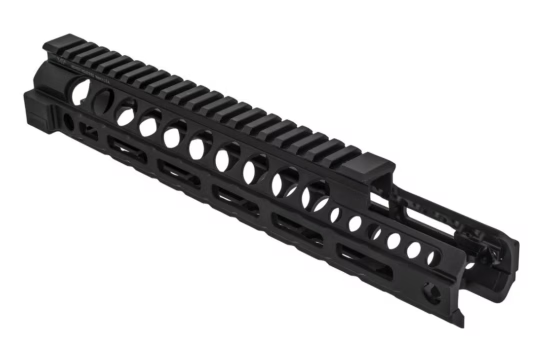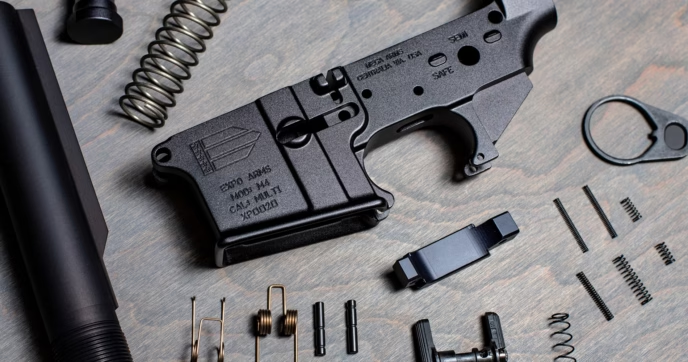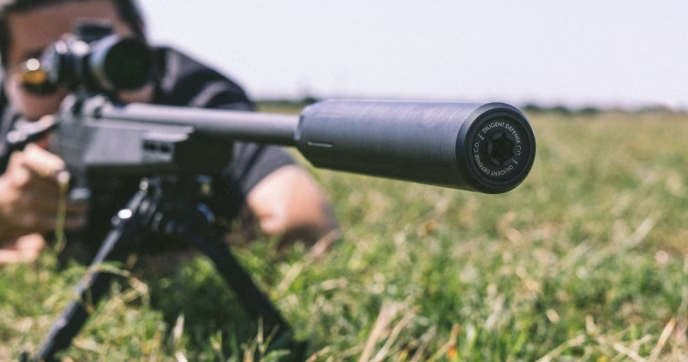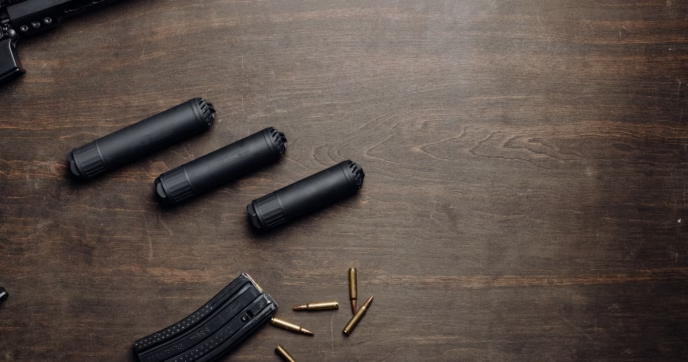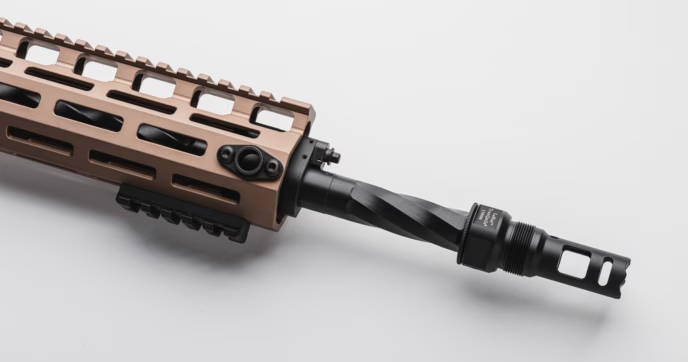The AR-10 serves as the foundation for multiple rifle configurations, offering a degree of adaptability that’s similar to its little brother, the AR-15. Allowing almost full customization, they grant users the ability to configure the rifle to better suit different applications, with almost every one of its components being upgradeable.
One of the most crucial components of any AR-10 setup is the handguard. Handguards not only exist to protect your hands from the intense heat of the barrel and gas system, but they also serve as the primary mounting hub for accessories and optics. As such, your handguard plays a critical role in affecting your AR-10’s ergonomics and overall utility.
While you may think that upgrading your handguard is an easy task like it is on the AR-15, there’s a lot more to take into consideration. You see, while the AR-15 has a mil-spec/standardized design that makes parts interchangeability consistent across manufacturers, AR-10 rifles don’t, meaning there are multiple AR-308 rifle patterns available, affecting their compatibility with different handguards.
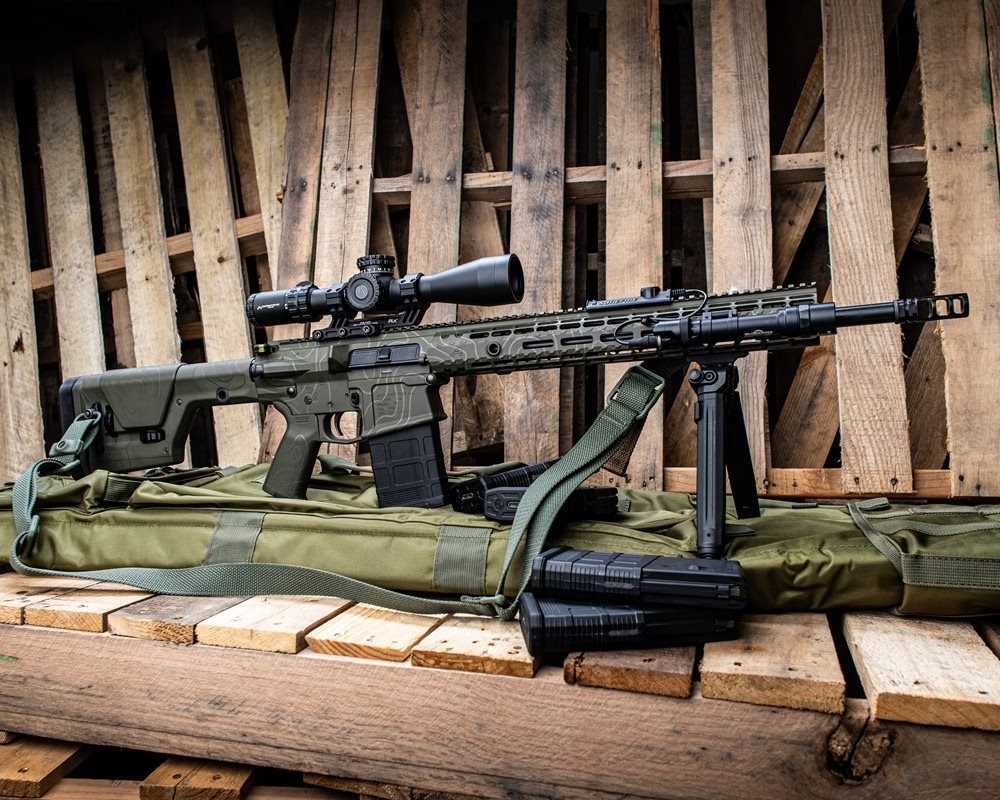
What is an AR-10 Free-Float Handguard
For those unfamiliar with the platform, the handguard on an AR platform rifle is a component that mounts to the upper receiver and extends over the barrel and gas assembly. As their name suggests, free floating handguards are just that, free floating, meaning they don’t come into contact with the barrel at all. As such, they don’t have an adverse effect on the rifle’s barrel harmonics, resulting in greater accuracy, and consistent shot placement. At first glance, AR-10 handguards look like bigger versions of AR-15 handguards, and while they have their similarities, their differences go beyond size, with their biggest one being their mounting compatibility.
Despite being used to describe AR pattern rifles chambered in full-power rifle cartridges, the term ‘AR-10’ is a trademarked term that only truly applies to rifles produced by Armalite. Although other rifles resemble Armalite’s AR-10, they aren’t identical. Instead, there are multiple AR-308 patterns to choose from, with Armalite, DPMS, and SR-25 pattern rifles being some of the most common. Each platform has a unique design that prevents their handguards from being interchangeable. So, if you have a DPMS .308 pattern LR-308, you can only use DPMS pattern handguards—the same applies for Armalite pattern rifles and so on.
While this does limit your ability to customize these rifles, if you run an AR-308 that has a common receiver pattern, there’s likely to be a good amount of high-quality aftermarket handguard options to choose from.
Pros of Using an AR-10 Free Float Handguard.
An AR-308’s handguard plays a crucial role in determining the functionality of your final AR-10 build. Modern free-floating handguards offer many advantages compared to traditional drop-in handguards.
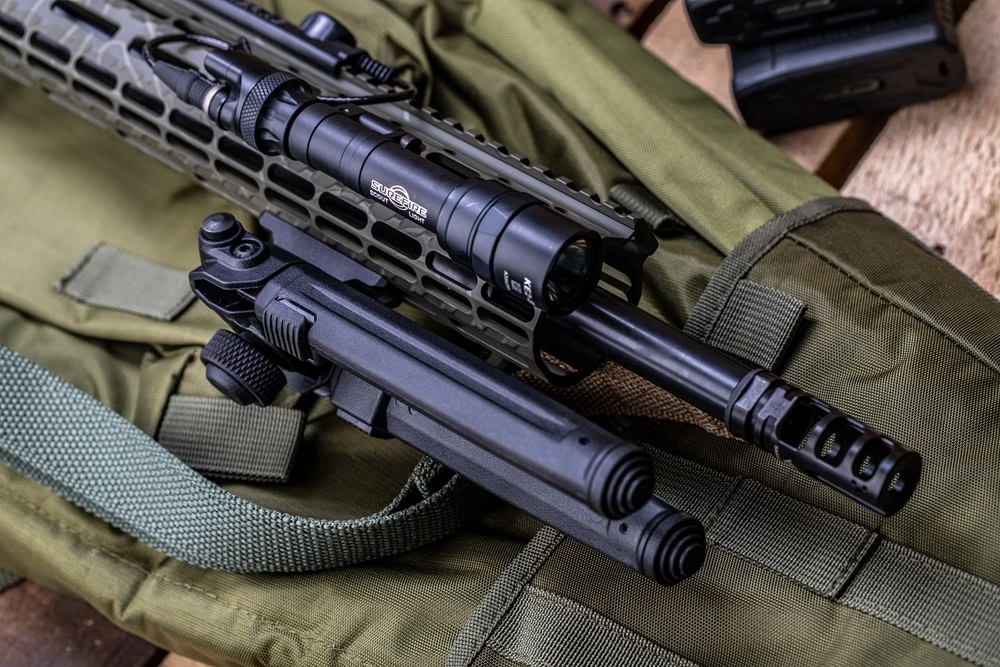
Accessory Mounting
Most, if not all, free floating handguards are designed to have some type of accessory mounting system like M-LOK, KeyMod, or Picatinny Quad Rails. Regardless of the type, they each give you the ability to refine your setup to better fit your application and individual preference.
Accessories like vertical foregrips, weapon lights, sling mounts, and offset sights can make your rifle more capable for general purpose use, while something like an AR bipod can provide the stability needed to maintain long-range accuracy whilst in the field. So, whether you plan to use an AR-308 for recreation, competition, hunting, or defense, with the right handguard, you can easily configure it for such purposes.
Accuracy Improvements
As we mentioned above, free floating handguards don’t have an adverse effect on the rifle’s barrel harmonics since no part of the handguard comes into contact with the barrel.
Drop-in handguards, in contrast, have components that do come into contact with the barrel, negatively affecting its harmonics. While AR-308s with drop-in handguards can still be incredibly accurate, such components can cause your point of impact (POI) to shift when shooting at longer ranges, which wouldn’t occur when using a free-floating handguard.
Ability to Retain Zero
Free floating handguards also have an incredible ability to hold zero while firing. Although the way AR-308 handguards mount to the upper varies depending on the model, most mount by clamping onto the rifle’s barrel nut, just like on an AR-15. Free floating handguards often come with their own specific barrel nut as well, allowing them to securely lock into place, preventing unnecessary movement. Once mounted, the lock up on these handguards is incredibly secure.
Plus, they’re most often made from high quality materials, making them light enough to not be burdensome, while strong enough to securely hold accessories like laser units without losing their zero after firing.
Factors to Consider when Selecting an AR-10 Handguard
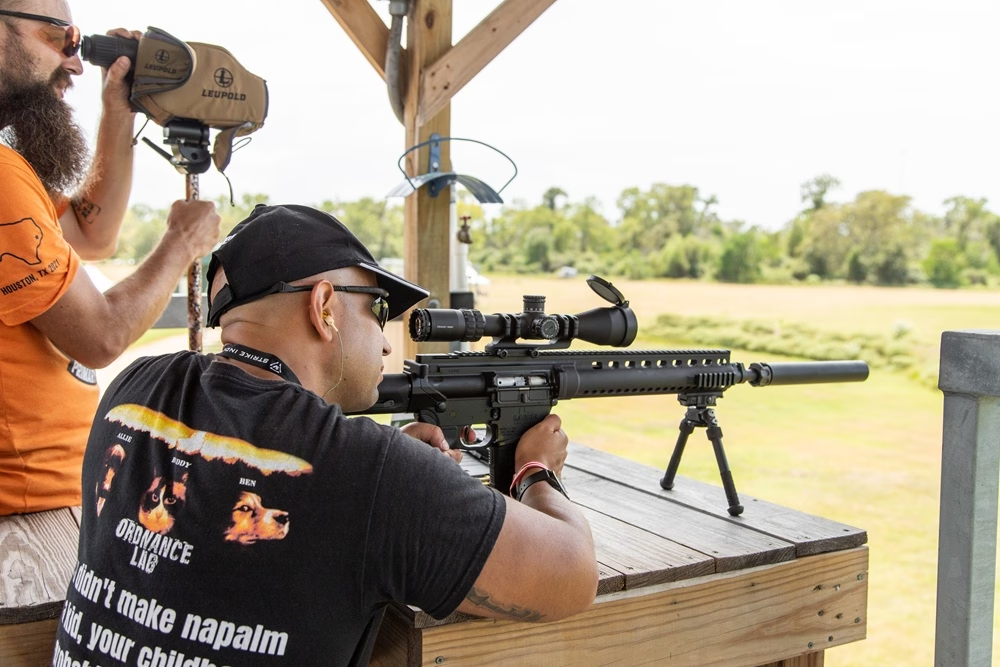
Compatibility
When choosing a handguard for your rifle, compatibility is one of the most crucial factors to consider. Like we said above, AR-308s don’t have a standard design like the AR-15 does, and while there are common patterns like the Armalite, DPMS, and SR-25, there are several rifles that have their own proprietary designs. Models like the Daniel Defense DD5, and LaRue Tactical PredatOBR are just a couple examples of rifles that use their own proprietary handguards.
If your rifle uses such a design, you won’t be able to run an aftermarket handguard unless it matches your rifle’s mounting system. Keep in mind that select manufacturers can, at times, offer handguards that match their proprietary designs. Brands like Aero Precision have multiple versions of their Enhanced Series handguards for their M5E1 AR-10 upper receivers. Still, proprietary designs significantly limit the number of handguard options available to choose from.
For more common rifle patterns, you’ll have a much wider array of options to pick from. Aero Precision’s standard M5 rifles and uppers are compatible with DPMS high profile handguards, while rifles like the Smith & Wesson M&P10 and Volunteer series are compatible with DPMS low profile options. In such cases, you can easily upgrade your handguard so long as you use one that’s compatible with your rifle’s receiver pattern. Still, since parts compatibility for AR-308s varies from model to model, we strongly recommend looking at user manuals and compatibility charts to make sure the aftermarket handguard you want is compatible with your model rifle before you make any final decisions.
Accessory Mounting System
We mentioned three different mounting systems earlier: M-LOK, KeyMod, and Picatinny Quad Rails. Each of these mounting systems are a solid choice for adorning your rifle with various accessories and gear, but they each come with their own considerations.
Of the main three, M-LOK is, by far, the most common mounting system available today, and you can think of it as the current industry standard. As such, there is an incredibly vast assortment of accessories made specifically for M-LOK rail systems. KeyMod is like M-LOK in concept, but it’s not as common. Manufacturers are still producing an assortment of gear for KeyMod rail systems, but compared to M-LOK, the variety isn’t quite on par. Lastly, Quad Rails have multiple picatinny rails on all sides that run the full-length of the handguard. Quad Rail handguards were the standard for a long time, and since they’re still so popular, there are a lot of accessories available for such handguards.
Out of the three, M-LOK and Quad Rail systems are the most common and are supported by basically all accessory manufacturers. KeyMod handguards can still be a solid option, but you’ll have to bear in mind that the number of accessories available for this interface isn’t going to be as great as it is for M-LOK or Quad Rail systems. That said, they still have their benefits that we’ll mention below.
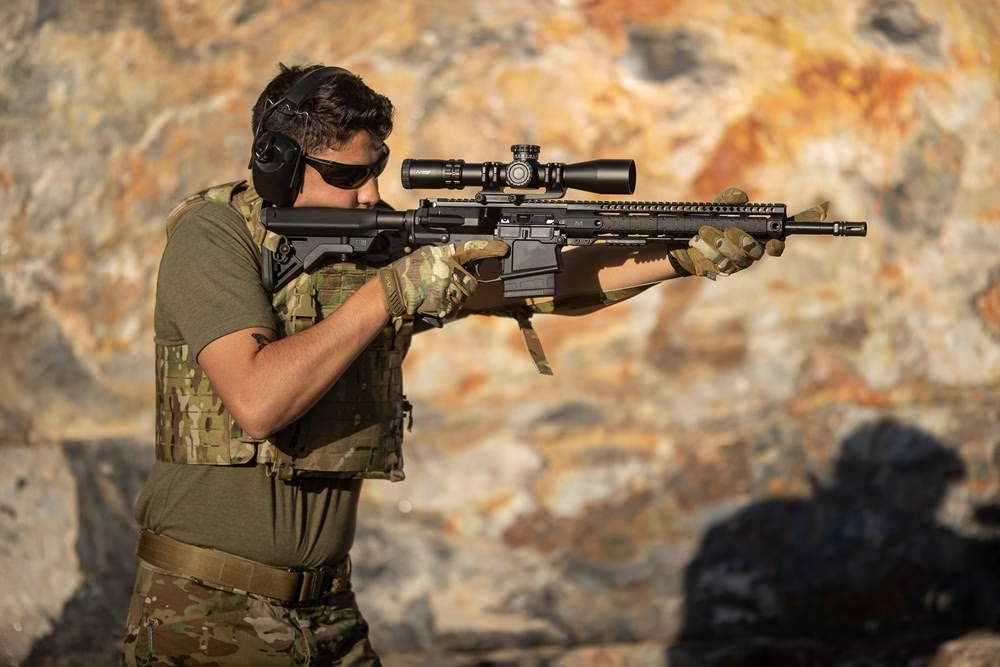
Ergonomics
Since your handguard serves as one of your primary points of contact on your rifle, ergonomics are another incredibly important factor to keep in mind when shopping for a handguard.
For optimal ergonomics, M-LOK and KeyMod handguards are often the go-to choice for many, as they’re slimmer and lighter than Quad Rails, making them easier to grip for longer periods of time while minimizing fatigue. More premium options can even come with smoothed edges and specialized contours for added comfort and grip too.
Quad Rail handguards, while a solid possibility, don’t offer the same level of comfort that can be found on M-LOK and KeyMod handguards. They’re a much heavier option since they require more material to produce, and their picatinny rails are much bulkier and tend to have sharper edges too. There are accessories like rail covers that make them more comfortable to grip, but these can increase the overall bulk of your handguard. Also, once you factor in accessories like lights and lasers, rifles with quad rails can become very cumbersome to carry and use.
Price
Just like with any other rifle accessory, the price of AR-10 handguards can vary depending on the manufacturer.
There are budget-friendly options from brands like Guntec USA, Aero Precision, and Midwest Industries, as they each produce free-floating handguards that typically hover around the $100 to $250 range. Meanwhile, more premium options from brands Centurion Arms, LaRue Tactical, and SLR Rifleworks, can be found in the range of $250 to upwards of $350+.
Regardless of which route you take, both echelons consist of a wide range of choices. So, no matter what your budget dictates, there’s sure to be a handguard option that’s a good fit for you.
Conclusion
Upgrading to a free-floating handguard can significantly enhance the way your rifle handles, while also allowing you to freely add accessories to further optimize your setup. As the AR-10’s popularity has continued to rise, so has the availability of rifles and accessories. While newcomers to the platform may believe that they’re just as adaptable as the AR-15, it’s critical to understand that AR-10 parts aren’t entirely interchangeable.
Particularly, AR-10 handguards aren’t universal. They don’t have a standardized design like the AR-15 does, making different pattern rifles are compatible with different handguards. And since there are so many different handguard options, we strongly recommend looking at compatibility charts and product manuals to make sure that the handguard you want is compatible with your pattern rifle.
If your AR-10 is compatible with aftermarket handguards, choosing one becomes a matter of finding the one that best fits your needs. And once you’ve found the right one, you can enjoy all the benefits it’ll bring to your rifle. If you’re used to AR-15s and want to better understand how AR-10s differ, our guide, “AR-10 vs. AR-15” offers an in-depth look on the similarities and differences of each platform.
